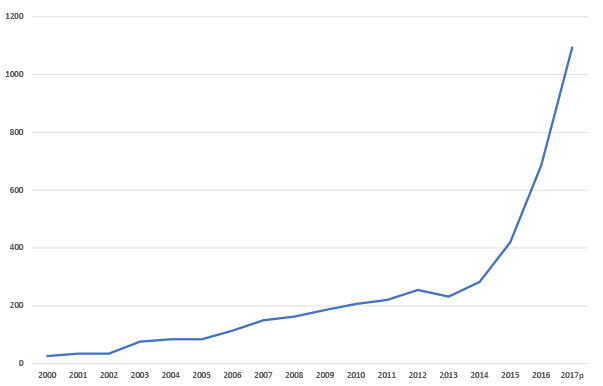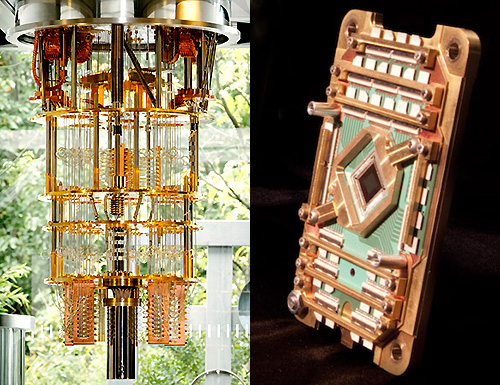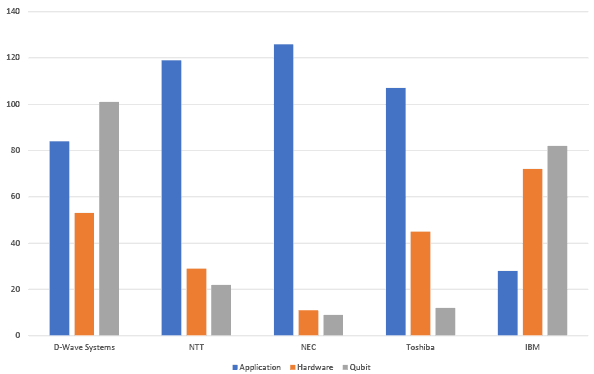Quantum information technology patent families by year

Source: Patinformatics
Quantum computing represents a leap in computing power as massive as the jump from a vacuum tube filled mainframe to the latest iPhone—it solves problems too complex for today’s machines. The adoption of this technology will have broad implications for cybersecurity, finance, medicine, and the development of new materials. Other growing computer science specialties such as machine learning and artificial intelligence algorithms will receive a shot in the arm.
With these game changing developments on the horizon, it’s no wonder the patent landscape reports are generating interest from Bloomberg News, MIT Technology Review, and even an army colonel writing a report for the Pentagon.
So, just what are patent landscape reports and why are they helpful for understanding the state of quantum computing? The definition that Trippe refers to is:
“Searching for, evaluating, and analyzing a large set of patent documents for the purpose of deriving insights from the general direction in which patent metrics are developing or changing in order to support policy, business, and research/development decisions.”
Two things are necessary to create an accurate report—an analyst with extensive patent experience and a high quality dataset.
Quantum computing is an ideal technology to study with a landscape report. As Trippe pointed out, he chose it as a topic to highlight his firm’s skills in producing such research reports, mainly because his client work is confidential and he hadn’t seen any other reports covering the topic. In 2014 he produced a similar analysis on wearable fitness monitors which was somewhat predictive of the acquisition of BodyMedia by Jawbone. We’ll have to wait and see if the patent trends uncovered for quantum computing are foretelling of future developments in the field.
Quantum computing hardware

Left: IBM 50Q System, courtesy of IBM. Right: D-Wave 2000Q processor, courtesy of D-Wave Systems Inc.

Left: IBM 50Q System, courtesy of IBM. Right: D-Wave 2000Q processor, courtesy of D-Wave Systems Inc.
Primary areas to watch include hardware, qubit, and applications, as most patents in the quantum computing space fall into one of these three categories. The hardware required for a quantum machine is vastly different from traditional computing, with some models resembling chandeliers that need to be super-cooled. Qubit (quantum bit) processors are the new kind of chip which enables the supercharged technology. New applications must also be built to run on quantum computers—unfortunately it’s not possible to use anything that runs on a traditional computer.
Leaders in quantum information technology patent families by organization and category

Source: Patinformatics
Is quantum computing about to change the world as we know it? No one knows for sure, but the reports from Patinformatics offer clues worth exploring. There’s a lot more information contained in them than can fit into a blog post, such as China’s rapid growth in quantum computing patent applications and the cybersecurity implications of such a massive advance.
Perhaps the cybersecurity angle is why the most recent public project from Tony Trippe involves this topic, in partnership with Minesoft. Be on the lookout for a webinar series covering the findings this fall. Learn more about the cybersecurity patent landscape report.